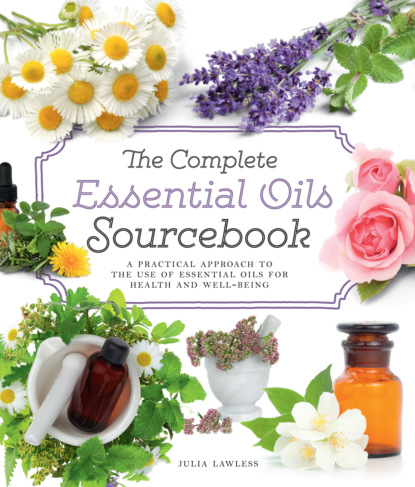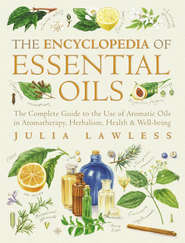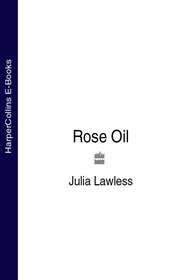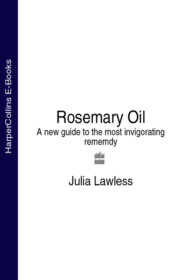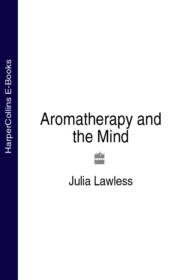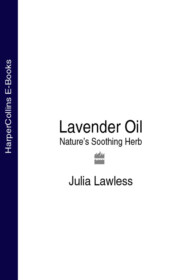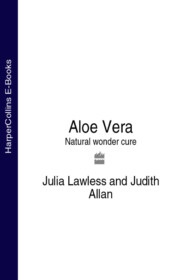По всем вопросам обращайтесь на: info@litportal.ru
(©) 2003-2024.
✖
The Complete Essential Oils Sourcebook: A Practical Approach to the Use of Essential Oils for Health and Well-Being
Настройки чтения
Размер шрифта
Высота строк
Поля
Scents rapidly affect our mood and emotions via the brain.
Mood and fragrance
Some negative emotional states that can be altered by fragrance are:
While scents have a chemical effect as they are absorbed by the bloodstream via the nose, they also work at a psychobiological level: for example, when we savor a pleasant fragrance, we take perceptibly deeper and slower breaths, relaxing our respiratory pattern much as we do in meditation. A scent can also serve to distract us, by becoming the focus for our attention, or by inducing positive memories and emotions.
Aromatherapy massage treatment can take advantage of the fact that the benefits of the massage are reinforced by the scent of the oils used, and that the scent comes to be associated quickly with the beneficial, pleasure-giving and relaxing effects of the treatment. The odors of the oils used thus carry a positive association that makes the recipient more receptive and reinforces the effect of subsequent treatments, by causing positive anticipation. The subtle choice of oils to match a person’s emotional make-up can open the door to helping that person to re-experience pleasure or joy.
This is similar to the use of incense in ritual and religious practices, where the familiar scent of the incense helps to bring about, through repetition as well as in its own right, a receptive and uplifting state of mind.
In a recent research trial, J. R. King found that some fragrances were normally very effective in promoting relaxation through association, despite individual variations. He has utilized a seaside fragrance in his relaxation work, because of its widespread positive associations, although he points out that if it is then used to counteract negative moods in stressful situations, such a fragrance would be best used sparingly and for brief periods, to preserve its value as a conditioned stimulus. Judiciously chosen and employed, however, essential oils, used in conjunction with massage in aromatherapy, can form a counter-vibration to that of the negative mood, and help to restore harmony.
Different attempts have been made to structure the relation between mood and scent. In Essential Oils as Psychotherapeutic Agents, Robert Tisserand proposes eight mood categories, in which essential oil can be used to help counteract or balance extremes of emotion (as illustrated above). The essential oils are highlighted in terms of the mood which they generally evoke. Ylang ylang generally inspires passion and also helps combat anger, and can be used to help frigidity and introversion. Jasmine may be used as a valuable oil for a person who is uninspired, dull, and in need of new ideas.
The benefits of aromatherapy massage treatment are reinforced by the scents of oils and their associations.
There can be a danger in linking particular essential oils too closely with specific emotions, because of the idiosyncratic nature of smell. When using natural aromatics for psychotherapeutic purposes, it is important to assess the personality or temperament of each person and to take his or her odor associations and preferences into account. In choosing fragrances which may correspond to the needs of an individual, personal preferences can often be of value as a therapeutic guide. Much as at times we crave certain foods that can supply nutritional elements which our body is lacking, so we may be emotionally drawn toward particular fragrances that have a balancing effect on our psychic disposition as a whole. Even a disagreeable reaction to a particular scent may give the aromatherapist an indication of a hidden or repressed area of psyche that needs attention.
ROSE WOOD
GALBANEUM
YLANG YLANG
Aromatherapists will frequently observe that their clients are instinctively drawn toward the essential oil that is right for their needs, and that as the client’s emotional state alters, so, often, does an aroma preference.
Scents function at the psychobiological level.
The Tisserand wheel illustrates the links between some common emotional states and specific oils. Personality type is shown in the outer wheel, then the “emotional” quality of the perfume and name of the oil, next the emotional state the oil can act on, and finally the type of action that the oil has.
Perfume and personality (#ulink_b161ea03-ec03-51b6-92cb-54a607427076)
CHOOSING A PERFUME to suit their mood and personality is one way in which most women—and, increasingly, many men—practice a form of aromatherapy on themselves. We can all observe that choice of perfume, just like color preference, is highly individual, despite prevailing fashions, and moreover that there is a distinct link between personality types and the type of perfume worn.
Why does a person like or dislike a particular scent or choose one perfume rather than another? The relationship between perfume and personality, between the “essence” of a person and the “essence” of a perfume, is an area which has intrigued the perfumery industry for centuries. The correlation between personality and fragrance was initially a supposition based on observation, but research into the psychophysiological factors involved in this field now supports the truth of the theory. Whatever the scientific explanation, the perfume chosen can highlight the personality of the wearer, and a personalized perfume, made as a unique blend for the person alone, can do this even more perfectly. An English physician of the 19th century stated that, in his opinion, a perfume should correspond to the personality, physical, emotional, and mental characteristics of its wearer, and should be as specific to each woman as the sound of her voice.
Personality types and color and perfume preference
A specific correlation of different scent types with personality types was made by the scientist and perfume expert R.W. Moncrieff. He noted that extroverts were less finely tuned in their odor preferences than introverts, and that they preferred lighter fragrances while introverts tended to be drawn to heavier, oriental scents.
The researchers Mensing and Beck have developed these notions further, showing a link between color and perfume preferences. They produced a series of eight circles, each with eight different overlapping color segments. The colors within each circle were chosen to match the preferences of the eight most common personality types, as shown below.
Formulating an individual blend (#ulink_fcaaf0a4-9373-53d3-b8da-fe7a33e082a3)
A MORE ELABORATE version of Mensing and Beck’s color chart is still used widely in the perfume industry to create new scents and to help target specific markets. It has also been adapted for psycho-aromatherapeutic purposes, where it can be employed to help aromatherapists select an essence from the range of natural aromatics. An introverted individual, for example, is likely to be attracted to oriental oils and incense materials, such as frankincense, patchouli, sandalwood, or galbanum—while an extroverted type will prefer fresh, fruity oils such as bergamot, lemon, or grapefruit.
When we move into the therapeutic use of essences, there are other factors to be considered apart from the esthetic appeal. While in perfumery the esthetic consideration is paramount, in therapeutic work the efficacy of the remedy is of prime importance. When dealing with the therapeutic application of essences, there are two separate dynamics to consider:
a fragrance that corresponds to the physical, emotional, and mental characteristics of the wearer
ingredients that are needed to balance what is absent in the health or personality of the wearer.
The need to choose a fragrance specifically tailored to the requirements of each individual client was the conclusion reached by the aromatherapist Marguerite Maury in her therapeutic work. She found that, of all the aspects of plant oils and their fragrances, “the greatest interest lies in the effect of fragrance on the psychic and mental state of the individual. Powers of perception become clearer and [events] are seen more objectively, and therefore in truer perspective.”
In devising her individual prescriptions, Mme. Maury assessed the physical, mental, and emotional disposition of each patient so that the remedy perfectly mirrored the patient. There is, for example, the case of the sad and anxious elderly man suffering from stress and insomnia, with a heart and kidney weakness. The individual mixture for this client was made up from rose, sandalwood, lavender, geranium, and benzoin. Benzoin dispels anxiety and interposes “a padded zone between us and events. Rose and sandalwood oil compensate for renal and cardiac deficiencies; lavender and geranium normalize…”
Since remedies are so allied to the patient’s state, blends evolve and change during the course of treatment in a subtle interaction between oils, blender, and patient.
Making a personal perfume
You will need:
A selection of essential oils with dropper tops
Jojoba oil or fractionated coconut oil (#litres_trial_promo)
A small, clean glass bottle with a tight stopper or lid
A note pad and pen
Blotting paper strips
Before beginning, lay out all the ingredients and materials needed on a clean surface in an odor-free environment. Using the blotting strips to assess the scent is described in detail here (#ulink_790f401d-8382-50ca-bd2a-b98304b40c31).
1 Select the oils that you think will be required to constitute the dominant notes in the blend (see here (#ulink_31e11d58-c7db-5955-a419-2a681b0b6f33)), including base note, middle note, and top note oils. Measure out the base oils in drops into a small glass bottle containing 1 tsp/5ml jojoba or fractionated coconut oil, following your intuition as to proportions. Record the name and exact quantity of each oil used.
2 Shake the bottle and assess the scent with a blotting paper strip. Add the middle note oils, measuring and recording carefully. Shake the bottle again and assess the effect as before.
3 Add the top notes, measuring and recording as before. Shake well and test.
4 Fine-tune, either by adding more drops of some ingredients, or by incorporating a new element. Add these oils a drop at a time, as one drop can radically affect the overall balance. Test the revised mixture on a new blotter strip.
5 When satisfied, seal the mixing bottle. Store it in a dark place for several weeks to mature. Check again to ensure the scent is rounded and well balanced.
The art of perfume blending (#ulink_ddb98e70-0072-5541-8c3d-5906ac00d6a2)
PERFUMERY IS BOTH a science and an art—it requires precision and sensitivity, but above all the ability to translate an intangible emotional experience or idea into a tangible composition.
In blending a perfume, the “rules of composition” have to be obeyed, as in music or painting, but the blender’s creative skills transcend these rules to produce an indefinable blend that stirs the emotions and echoes a mood. A professional perfumer has to have a thorough knowledge of the properties of a huge range of ingredients, and how they interact, but it is nevertheless possible to make successful perfumes for one’s own use, and as gifts for other people, using essential oils.
People generally prefer a many-layered fragrance, since a combination of different aromas tends to be more interesting and intriguing. When natural aromatic oils are combined, the effect is a chemical reaction that breaks up their original molecular structure and they recombine to form entirely new molecules. The final quality of the blend is always an unknown factor. The aim is to make a “bouquet” or a “seamless scent,” where the whole adds up to more than just a sum of its parts. The famous French perfumer Pierre Dhumez declared that the ideal perfume consisted of a basic harmonious blend of just three or four dominant “bodies.” When combined in “inspired” proportions they form a whole in which it is impossible to distinguish one odor from the other. The scent is a perfectly balanced mixture which smells as a separate entity. This basic harmony, once it has been achieved, is enhanced by the addition of tiny amounts of other fragrances.
Many of the spicy and more exotic essential oils come from the East.
RESIN | BENZOIN
CITRUS | LEMON
Другие электронные книги автора Julia Lawless
Rose Oil




 0
0





